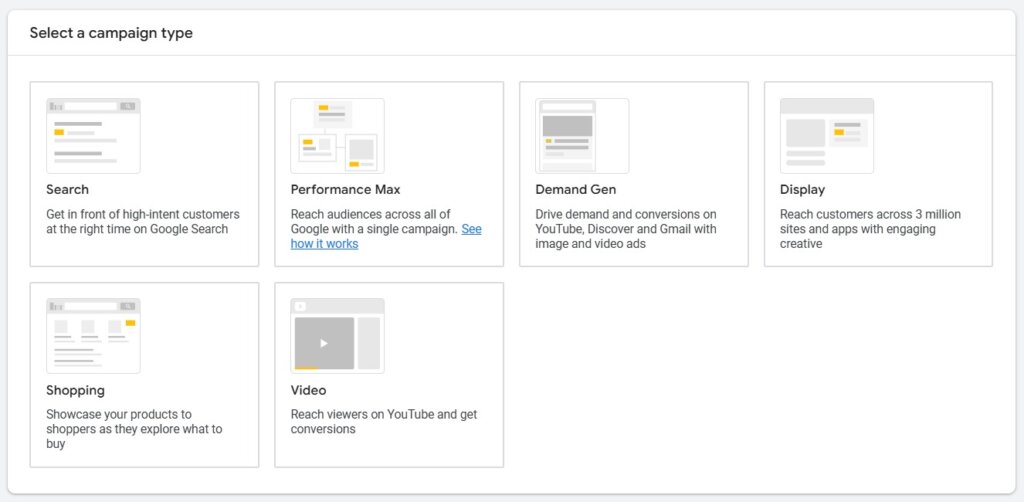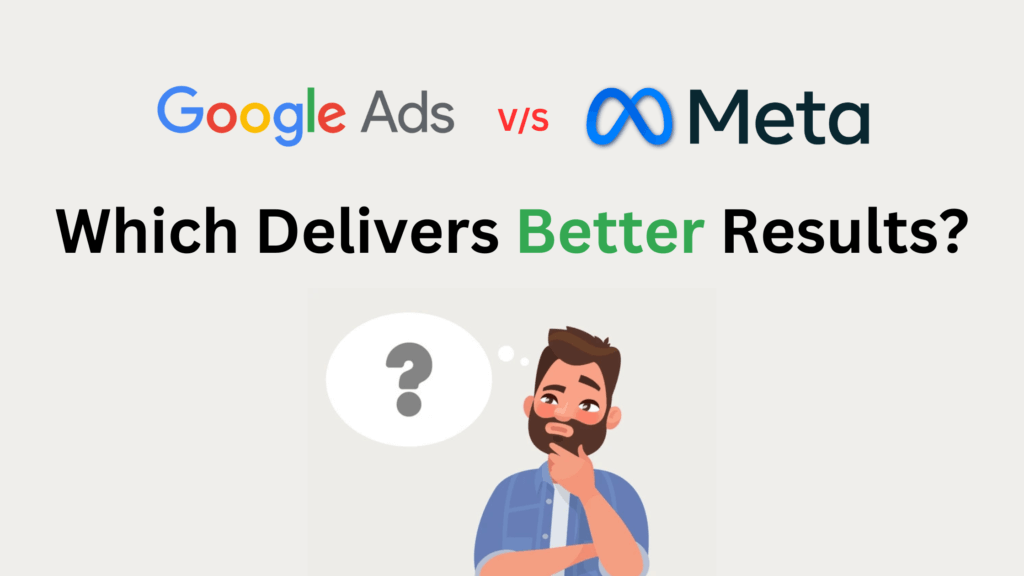Meta and Google are the two largest platforms for performance marketers and brands. Most online businesses heavily rely on these advertising platforms. Both have their own pros and cons and function differently when it comes to running ads and targeting audiences for products and services. Let’s dive into how both platforms work for brands and professionals.
1. Platforms Included
Here’s why these names dominate the digital advertising space:
Meta
- Facebook (2.96 billion monthly active users as of Q3 2024)
- Instagram (2.35 billion monthly active users as of Q3 2024)
- Messenger
- Audience Network

Google Ads
- Google Search (handles over 8.5 billion searches per day)
- Display Network
- YouTube (2.70 billion monthly active users in 2024)
- App Network

Meta platforms, such as Instagram and Facebook, are almost ubiquitous, with users interacting daily. Similarly, Google dominates through YouTube and its search engine, where users actively seek solutions and information.
2. Key Difference in Approach
The fundamental difference lies in audience intent:
- Google Ads: Users are actively searching for something based on their needs and past behavior, which makes Google more intent-driven.
- Meta Ads: Marketers reach audiences based on their interests, demographics, and behavioral patterns, making it more discovery-oriented.
3. Campaign Objectives
Both platforms require you to define your campaign objectives, but they approach it differently:
- Google Ads:
Google offers a structured format with Goals, which are further broken into specific campaign types, allowing for precision in execution. You can run one objective with multiple campaign types.
- Meta Ads:
Meta aligns the campaign creation process with Objectives, streamlining the process. You only need to define the objective, and the platform tailors the campaign structure automatically.
This difference is significant because Google allows more flexibility in experimenting with objectives and campaign types, while Meta simplifies the setup process.
4. Audience Targeting
Google Ads:
Audience targeting on Google revolves around user searches and activities across its network. Key targeting options include:
- Custom Segments: Target users based on searches, and behaviors on relevant websites, and apps.
- Google-Engaged Audiences: Users previously engaged with your website or content on Google Search, YouTube, or other Google sites.
- Detailed Demographics & Life Events: Target by age, location, or significant life events like graduation or marriage.
- In-Market Audiences: Reach users with recent purchase intent.
- Your Data Segments: Use first-party data to retarget existing users or create lookalike audiences.
Meta Ads:
Meta simplifies audience targeting into three main categories:
- Detailed Targeting: Based on user interests, behaviors, and activities.
- Custom Audiences: Target users who have already interacted with your website, app, or Meta properties.
- Lookalike Audiences: Expand your reach by targeting audiences similar to your existing ones.
- Advantage+ Audiences: Meta’s AI-driven tool to optimize targeting and find the most relevant audience for your campaign.
5. Budget & Pricing
- Meta Ads:
Meta primarily uses a CPM (Cost per Mille) model, charging for every 1,000 impressions. You can choose:- Campaign Budget Optimization (CBO): Meta allocates your budget across ad sets to maximize results.
- Ad Set Budget Optimization (ABO): You control the budget at the ad set level, tailoring it based on audience size.
- Google Ads:
Google charges based on a Pay-Per-Click (PPC) model. You allocate budgets at the campaign or ad group level, specifying how much you want to spend.
Which Platform is Better?
Both platforms excel in different areas depending on your business needs:
- Google Ads: Best for intent-driven businesses targeting specific queries or leveraging user behavior.
- Meta Ads: Ideal for businesses building brand awareness, reaching new audiences, and tapping into untapped markets.
Professionals agree that the choice depends on your business goals and audience type. If you aim to capture existing demand, Google is unmatched. However, for creating demand and exploring new audiences, Meta is the go-to platform.

